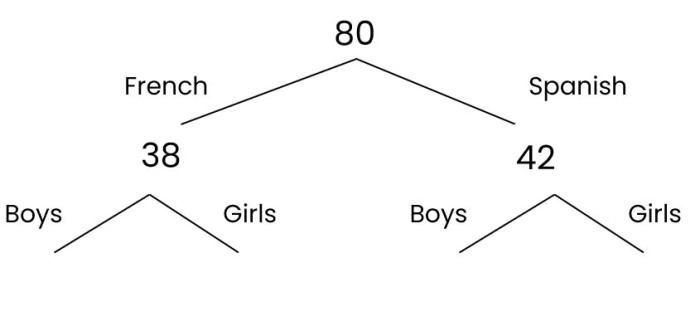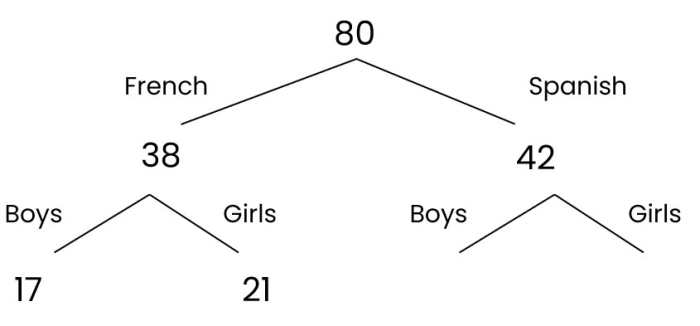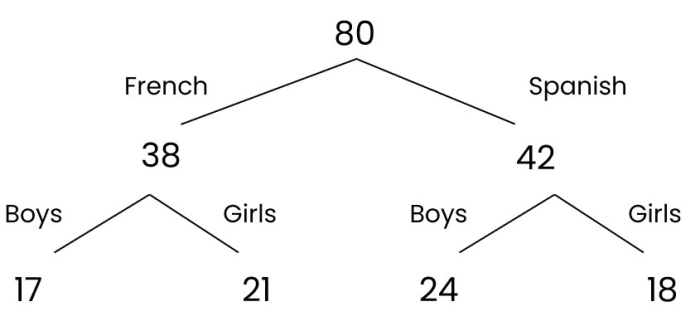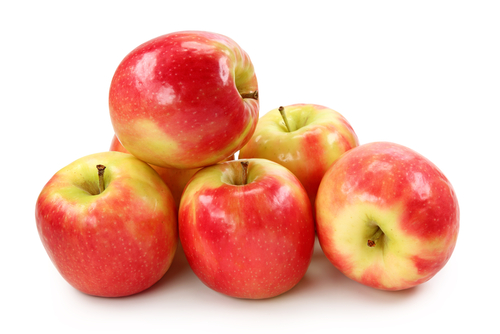Do you study any languages?
.jpg)
In Year 7, students can choose to study either French or Spanish.
We know that there are 80 students altogether.
38 students study French, out of which 17 are boys.
Given that there are 41 boys altogether and there are only boys or girls in this class, how many girls study Spanish?

Oh wow, that's a lot of numbers all intertwined together, isn't it?!
Luckily we have vertical tree diagrams to help us untangle it!
We know that there are 80 students altogether, 38 of whom study French.
The students can study either French or Spanish.
This means that there are 80 - 38 = 42 students who study Spanish.
This gives us the top of our vertical tree diagram:

We know that there only either boys or girls in the class.
So we can split both 38 and 42 into boys and girls:

We know that 17 out of the 38 students studying French are boys.
This means that there are 38 - 17 = 21 girls studying French.
Our diagram now becomes:

Finally, we know that there are 41 boys altogether.
We can see that 17 of these boys study French.
So 41 - 17 = 24 boys study Spanish!
There are 42 students studying Spanish, 24 of whom are boys, so there are 42 - 24 = 18 girls studying Spanish.
This completes our vertical tree diagram!

We can double-check we've got the right diagram by adding all the numbers at the ends of the branches:
17 + 21 + 24 + 18 = 80
And indeed, we have 80 students in total - so it all checks out!
Coming back to our question: how many girls study Spanish?
We can see that 18 girls study Spanish.
Can you see how the diagram made answering this so much easier?!

We could also organise the diagram the other way: splitting the 80 between boys and girls first and then splitting each between French and Spanish.
Vertical tree diagrams are one way to deal with questions like the one above where we have overlapping subcategories.
To see another, let's have a look at another example.
80 students were asked if they prefer apples, oranges or bananas.
We know:
19 students prefer bananas, 12 of whom are girls
13 out of 37 boys prefer oranges.
40 students prefer apples.
How many girls like apples?

To organise the data, let's set up a two-way table:

We can see it's called two-way because it goes both ways (boys vs girls and fruits!).
Let's fill in the information we are given:

Then we can fill in the rest by using the totals!
For example, we can see that 19 students in total prefer bananas, 12 of whom are girls.
So, we can get the number above 12 (the number of boys who like bananas) by subtracting 12 from 19:
19 - 12 = 7 boys prefer bananas.

We can then get the number of boys who like apples by looking at the first row:
There are 37 boys altogether, 7 of whom prefer bananas and 13 oranges.
So there are 37 - 7 - 13 = 17 boys who prefer apples.

We can get the number of girls who prefer apples (the thing we were asked for!) by looking at the first column.
40 students in total like apples, 17 of whom are boys.
So there are 40 - 17 = 23 girls who prefer apples!
Two-way table questions tend to have a lot of sub-questions, so it's usually worth it to continue this process to complete the whole table:

We could have done either question that we've looked at today using vertical tree diagrams or two-way tables.
Both are completely valid methods, so it's up to you which you prefer!

Ready to have a go at some questions?








